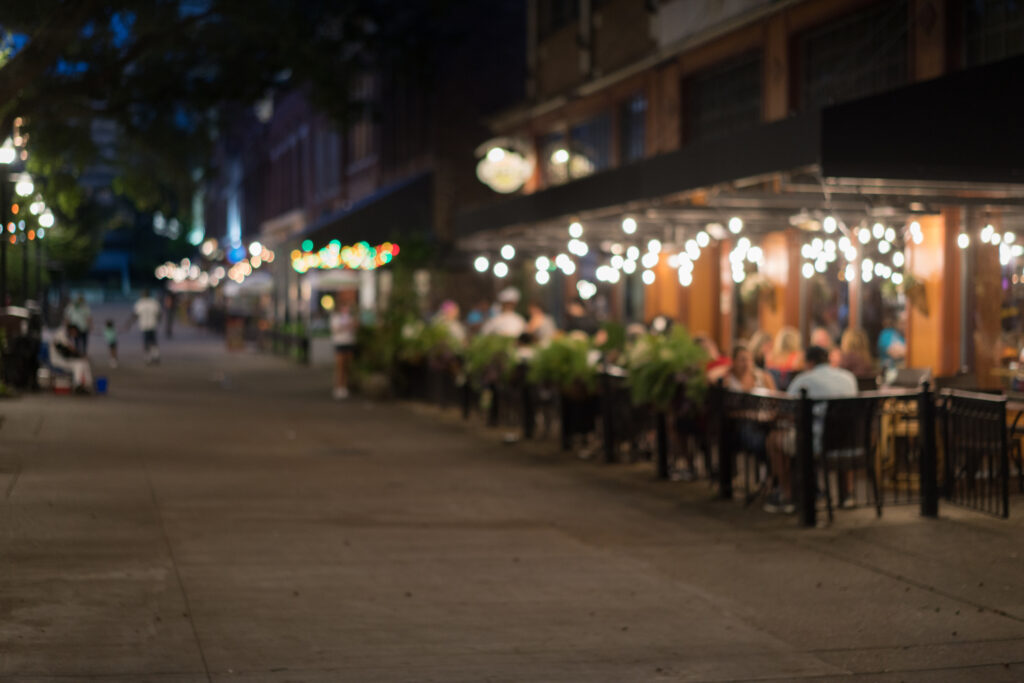Outdoor dining has always been popular, but the outdoor dining scene saw a dramatic increase in popularity during the COVID-19 pandemic. For instance, New York City’s outdoor dining initiative resulted in more than 12,000 venues, such as bars and restaurants, being set up throughout the city’s streets, sidewalks, and parking lanes.
While bills are being introduced to formalize and improve outdoor dining, restaurant owners need to know how to enhance their dining experiences today. We’ve created a checklist to help ensure your venue has the guidance necessary to provide a safe, comfortable, and memorable outdoor dining experience.
Also read: The Outdoor Dining Trend: 4 Things to Consider
1. Location
Without a suitable outdoor dining location, customer safety could be at risk, as well as the safety of the general public and employees.
Ensure your location complies with local government entities, such as the fire or building departments. Place your area away from any traffic, and implement visible signage to help pedestrian traffic flow, such as barriers, signs, and wheel stops.
2. Outdoor Dining Safety
With the popularity increase from the pandemic, outdoor dining areas are typically places that weren’t previously built for dining—meaning there could be unidentified risks for slipping, tripping, or falling.
To avoid this, restaurants should ensure the following:
- Adequate lighting
- The removal of trip hazards such as electronic cords
- Areas are cleaned regularly, organized, and cleared of clutter
Also read: 4 Ways to Prevent Slip and Fall Claims in the Food Industry
3. Codes and Regulations
Restaurant owners should ensure their outdoor dining area complies with state and local building codes, as well as zoning ordinances. These are available on a state’s relevant government website.
When hiring a contractor, ask for proof of insurance, such as General Liability Insurance.
4. Permits
From temporary outdoor applications to seasonal outdoor dining permits, restaurant owners must have the correct permits to create an outdoor dining area. These are usually issued by local health departments responsible for the restaurant’s location, and restaurants likely already have a standing relationship with them.
5. Exits
Ensuring exits of adjacent buildings or streets aren’t blocked by outdoor dining areas is crucial to safety. Failure to do so could obstruct a fire exit or stop an emergency responder from assisting during a disaster.
To avoid these risks:
- Check that your outdoor area isn’t blocking any exits to other buildings that would prevent pedestrians or emergency responders from accessing properties.
- Ensure there is plenty of room around pop-up areas, such as 10 feet between stake lines around pop-up tents.
Also read: 5 Reasons for Internal Restaurant Safety Audits
6. Weather Awareness
High winds, lightning strikes, heavy rain, or even snow can be too much for common outdoor areas to handle. Keep an eye on the weather, know your outdoor installation’s wind and snow rating, and have a plan in place to secure or rapidly break down the dining area.
If temperatures drop, heating units should be available for patrons. They must be listed for commercial use, and staff should take all necessary safety precautions for dining outdoors (such as putting a flame guard on open flame gas pits). Staff should also be trained to shut off the fuel supply in an emergency, with the valves clearly marked.
7. Fire Extinguisher
While outdoor heaters are a necessary component of restaurant patrons’ comfort, there are risks involved, including:
- Fire
- Burns
- Carbon monoxide poisoning
Restaurant staff should always have access to a fire extinguisher, which should be placed near outdoor heaters where they can be easily accessed. Beyond that, there are a few safety precautions restaurants can take for their outdoor dining areas, including:
- Turning heaters off when not in use or unattended.
- Implementing flame guards.
- Training staff to handle an emergency and be able to shut off fuel immediately.
- Ensuring outdoor dining area structures are fire resistant.
8. Pest Control
Common outdoor pests like flies, mosquitos, ants, and stinging pests like bees and wasps often plague outdoor dining areas.
To keep pests away, restaurant owners should:
- Keep the area clean: Follow standard restaurant cleaning protocols and train your staff to maintain clean areas.
- Install bug zappers: By attracting insects with their light, bug zappers discreetly dispose of any pests.
- Practice garbage control: Pests are attracted to garbage. If possible, keep trash bins away from the dining area—and if they are outdoors, ensure they are covered with a secure lid.
- Install outdoor fans: Flying pests are blown away by a gentle breeze while also making customers more comfortable.
9. Invest in Restaurants, Bars, & Taverns Insurance
As legislation continues to evolve and restaurants invest in safety precautions for their outdoor dining setups, obtaining an insurance policy should also be a priority. Safety measures will go a long way to protecting patrons and staff, but risk is always present.
McGowan Program Administrators specializes in providing diverse, customizable insurance coverage options. Our Restaurants, Bars, and Taverns Insurance policy offers peace of mind for any food venue—from restaurants to gastro pubs—so they can focus on bringing exceptional experiences to their patrons. Contact us to learn more about how McGowan bundles unique and distinctive insurance policies for your needs.


